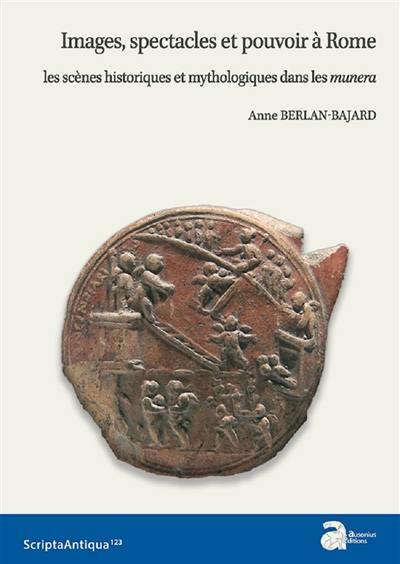
Collection(s) : Scripta antiqua
Paru le 03/01/2020 | Broché 345 pages
Public motivé
sous la direction de Gilles Sauron
Images, spectacles et pouvoir à Rome
À l'initiative de César, puis de Néron, tous deux novateurs en matière de spectacle, on vit apparaître les munera, cadre particulièrement ouvert aux initiatives liées au développement de l'idéologie impériale, une série de mises en scène de thèmes historiques et mythologiques. En effet, la naumachie et la bataille rangée présentés par César en 46 a.C. associaient à des principes proches de la gladiature des thèmes empruntés à l'histoire militaire du monde grec et à la mise en image de leurs victoires par les souverains du monde hellénistique. Ce modèle fut suivi par Auguste et ses successeurs pour les naumachies, tandis que les combats terrestres s'inspiraient désormais de l'iconographie triomphale romaine pour mieux célébrer les plus récentes victoires du prince. Quant aux spectacles de thème mythologiques, attestés pour la première fois sous Néron et rapidement désignés sous le terme de pyrrhiques, ils reconstituaient dans l'arène la mort de personnages coupables d'hybris comme Icare ou Actéon, les exploits des héros tueurs de monstres, tels Hercule, ou évoquaient des figures soulignant la puissance et l'éternité de Rome, comme ses dii parentes, Mars et Vénus. Cet ouvrage associe aux sources écrites sur ces spectacles une documentation iconographique dont compilation n'avait jamais été réalisée. L'ensemble permet de constater l'intégration des pyrrhiques au programme des munera jusqu'au IVe siècle, aussi bien à Rome que dans les provinces, et surtout de mettre en évidence le nombre réduit et la récurrence, durant toute cette période, des thèmes mythologiques choisis. La recherche de l'origine de ces choix révèle le succès particulier préalablement obtenu dans les spectacles scéniques et surtout dans l'art romains par tous ces thèmes, mais aussi parfois le rôle joué par les munera eux-mêmes dans la longévité de ce succès. L'ouvrage illustre donc l'influence réciproque entre arts plastiques et spectacles romains, et les choix effectués dans la culture grecque, souvent sous l'impulsion de l'idéologie impériale, par un imaginaire collectif unifiant l'ensemble de l'empire autour de références culturelles communes.
At the instigation of Caesar, then Nero, both of whom were innovators in the area of spectacle entertainment, a series of displays based on historical and mythological themes appeared in the Roman munera, which were particularly suited to efforts to develop imperial ideology. Thus, the naumachia and pitched battle that Caesar had staged in 46 BC combined gladiatorial elements with scenes taken from Greek military history, along with the imagery used by the rulers of the Hellenistic world to represent their victories. This model was then taken up by Augustus and his successors when it came to the naumachia, while the land battles were henceforth based on Roman triumphal iconography as a way of celebrating the prince's most recent victories. As for the mythologically themed shows, first documented under Nero and soon referred to as pyrrhicae, they re-enacted, in the arena, the death of characters guilty of hubris (such as Icarus or Acteon), the exploits of heroes who killed monsters (such as Hercules), or figures that symbolized the might and the eternity of Rome, such as its dii parentes, Mars and Venus. This book combines written sources on these spectacles with iconographic material that has never previously been compiled. Together, these documents allow us to see the way in which the pyrrhicae were incorporated into the programme of the munera up to the 4th century, both in Rome and in the provinces and, above all, to highlight how few in number and how recurrent were the chosen mythological themes throughout the whole period. Upon investigating what lay behind these choices, it emerges that all these themes had previously been highly successful on the Roman stage, and especially in Roman art. In turn, it transpires that the munera often played a role in the enduring success of these themes. Hence, this book highlights the way visual arts and Roman spectacle entertainment influenced one another. It also illustrates the choices made, often under the impetus of imperial ideology, when it came to borrowings from Greek culture ; choices which contributed to the creation of a collective imaginary uniting the whole empire around common cultural references.